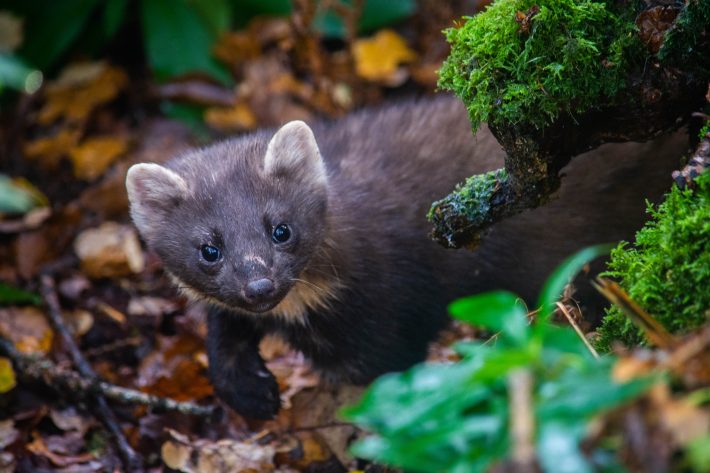Research shows recovering pine marten population benefits red squirrels, but the grey squirrel still poses a problem in urban areas
Queen’s University Belfast research.
Research led by Queen’s University Belfast has found that whilst red squirrels are responding positively to the increased presence of the pine marten across Ireland and Britain, its ability to control the grey squirrel is limited by the lack of forest cover and the presence of urban refugia. The research, carried out in partnership with National Museums Northern Ireland, is published in Journal of Applied Ecology.

Research has found that despite the on-going recovery of the pine marten, and its ability to provide natural biological control of the invasive grey squirrel, isolated populations of grey squirrels in parklands in towns and cities are still likely to persist.
The study used data from 332 sites across Northern Ireland covering all sizes and shapes of woodlands in both urban and non-urban areas. To collect the data, a team of 70 citizen scientists deployed a camera trap at sites at randomly selected locations. The researchers used data to measure the co-occurrence of the species throughout the region. Models were then used to produce predictions of the future distribution of the three species. The probability of occurrence for each species was estimated in every 1km2 in Northern Ireland based on interactions between habitat suitability and the presence of other species.
The results predict that grey squirrels will still persist in parkland areas of towns and cities as pine martens were shown to be forest specialists and displayed strong avoidance of human settlement and disturbance in and around urban areas.
Joshua Twining, researcher from the School of Biological Sciences at Queen’s University Belfast and lead author on the research said: “The ability of the pine marten to control the grey squirrel and help red squirrel recovery in Ireland and Britain is limited by three things; its ongoing recovery, the lack of forest cover on the islands and the presence of urban refugia.”
At present, Ireland and Britain are among the least forested countries in Europe with only 11% and 13% of forest cover respectively. The pine martens’ sphere of influence is largely limited to its forested havens.
The team poses that in the safety of refuges in towns and cities, grey squirrels, in time, may have the ability to develop novel genotypes. If genotypes develop that allow grey squirrels to more successfully avoid the pine marten, such as conveying an ability to adapt anti predator behaviours in response to pine martens, we may in the future see the grey squirrel recolonize landscapes, once again driving red squirrels to the brink of extinction throughout much of Britain and Ireland.
As well as threatening the red squirrel and our native biodiversity, grey squirrels also cost the U.K. an approximated cost of 1.9m per annum due to damage caused to trees through bark stripping. Bark stripping is a behaviour exhibited in grey squirrels where bark is stripped off trees to access the rich sugary sap in the phloem. In some cases this damage has been observed to suppress tree growth and forest regeneration.
The research team suggests that if the red squirrel is to recover in any meaningful way, then human led control efforts in urban refuges requires immediate funding and implementation. Human led efforts must be coupled with education campaigns to increase awareness of the dangers of invasive species, and the benefits of predator recovery if we are to secure a future for our native red squirrels. Twining added: “As the pine marten does not occupy urban areas anywhere within its European range, it is not likely to be the sole solution to the invasive grey squirrel. If action is not taken to support the pine marten in the long run, we may see a reversal of their current success, and doom our native red squirrels.”
The research concludes that the pine martens’ limited sphere of influence must be increased through afforestation focusing on native, natural woodlands, and restoring old-growth conditions to existing forestry which would lead to concurrent increases in the pine marten’s ability to control grey squirrels and aid recovery of the red squirrels.
You can read the article for free (for a limited time) here:
https://besjournals.onlinelibrary.wiley.com/doi/10.1111/1365-2664.13660
Like what we stand for?
Support our mission and help develop the next generation of ecologists by donating to the British Ecological Society.